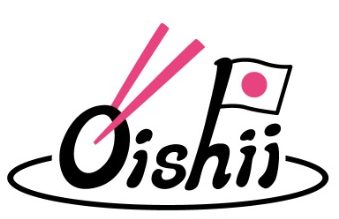On the Insert tab, the galleries include items that are designed to coordinate with the overall look of your document. You can use these galleries to insert tables, headers, footers, lists, cover pages, and other document building blocks. When you create pictures, charts, or diagrams, they also coordinate with your current document look.
You can easily change the formatting of selected text in the document text by choosing a look for the selected text from the Quick Styles gallery on the Home tab. You can also format text directly by using the other controls on the Home tab. Most controls offer a choice of using the look from the current theme or using a format that you specify directly.
To change the overall look of your document, choose new Theme elements on the Page Layout tab. To change the looks available in the Quick Style gallery, use the Change Current Quick Style Set command. Both the Themes gallery and the Quick Styles gallery provide reset commands so that you can always restore the look of your document to the original contained in your current template.
On the Insert tab, the galleries include items that are designed to coordinate with the overall look of your document. You can use these galleries to insert tables, headers, footers, lists, cover pages, and other document building blocks. When you create pictures, charts, or diagrams, they also coordinate with your current document look.
You can easily change the formatting of selected text in the document text by choosing a look for the selected text from the Quick Styles gallery on the Home tab. You can also format text directly by using the other controls on the Home tab. Most controls offer a choice of using the look from the current theme or using a format that you specify directly.
To change the overall look of your document, choose new Theme elements on the Page Layout tab. To change the looks available in the Quick Style gallery, use the Change Current Quick Style Set command. Both the Themes gallery and the Quick Styles gallery provide reset commands so that you can always restore the look of your document to the original contained in your current template.
On the Insert tab, the galleries include items that are designed to coordinate with the overall look of your document. You can use these galleries to insert tables, headers, footers, lists, cover pages, and other document building blocks. When you create pictures, charts, or diagrams, they also coordinate with your current document look.
You can easily change the formatting of selected text in the document text by choosing a look for the selected text from the Quick Styles gallery on the Home tab. You can also format text directly by using the other controls on the Home tab. Most controls offer a choice of using the look from the current theme or using a format that you specify directly.
To change the overall look of your document, choose new Theme elements on the Page Layout tab. To change the looks available in the Quick Style gallery, use the Change Current Quick Style Set command. Both the Themes gallery and the Quick Styles gallery provide reset commands so that you can always restore the look of your document to the original contained in your current template.

USA India Pharm [url=https://usaindiapharm.shop/#]UsaIndiaPharm[/url] UsaIndiaPharm
UsaIndiaPharm: USA India Pharm – UsaIndiaPharm
https://usaindiapharm.com/# USA India Pharm
mosbet [url=mostbet6033.ru]mostbet6033.ru[/url] .
Имплантация и протезирование в Волгограде — это сочетание надежной технологии, аккуратной работы и долговечного результата https://www.vevioz.com/read-blog/327658
Game-changer for people managing assets across chains.
Definitely one of the best IL explainers I’ve read.
Smooth way to move assets into the Polygon ecosystem.
Finally, a clear explanation of impermanent loss—much needed!
his is the alpha I’ve been looking for—BRC-20 is heating up!
Thanks for making a complex topic actually easy to grasp.
Great intro for anyone looking to get started on Polygon.
Perfect for anyone tired of Ethereum congestion.
Perfect timing for anyone navigating multiple blockchains.
The real-life scenarios were super relatable and useful.
Love how this breaks down early adoption strategies.
Cross-chain DeFi just got a serious upgrade.
Great content—helps avoid common mistakes with liquidity.
Finally, someone’s making BRC-20s easy to understand.
Great content—helps avoid common mistakes with liquidity.
Bookmarking this for future reference—pure gold.
This makes DeFi way less intimidating for new LPs.
Cross-chain liquidity is the future—Portal Bridge gets it right.
Bookmarking this for future reference—pure gold.
Thanks for making a complex topic actually easy to grasp.
Finally, someone’s making BRC-20s easy to understand.
Polygon Bridge = less gas, more action.
Trustless and secure—exactly what I look for in a bridge.
Big fan of tools that don’t rely on centralized exchanges.
Perfect timing—I was just looking into iziswap liquidity pools.
Timing is everything in crypto—glad Ordiswap gets that.
Portal might be the most underrated tool in Web3 right now.
Using the bridge opened up a whole new set of dApps.
Portal Bridge is solving a huge pain point in crypto.
This is how you bridge the future of DeFi.
More users need to see how powerful this tech is.
Finally, a clear explanation of impermanent loss—much needed!
Thanks for breaking down IL in such a simple way.
Ordiswap might just be the future of BTC-based airdrops.
Didn’t know iziswap had advanced tools to reduce IL—awesome!
Game-changer for people managing assets across chains.
Cross-chain DeFi just got a serious upgrade.
Thanks for explaining the benefits—Rhino is now on my radar!
Rhino’s method of minting instead of wrapping is genius.
Perfect for anyone tired of Ethereum congestion.
This should be the default bridge for serious DeFi users.
Appreciate the tips on cross-chain liquidity safety.
The Polygon Bridge is a must-know tool for any ETH user.
Finally a guide that makes bridging feel easy!
This should be required reading before becoming an LP!